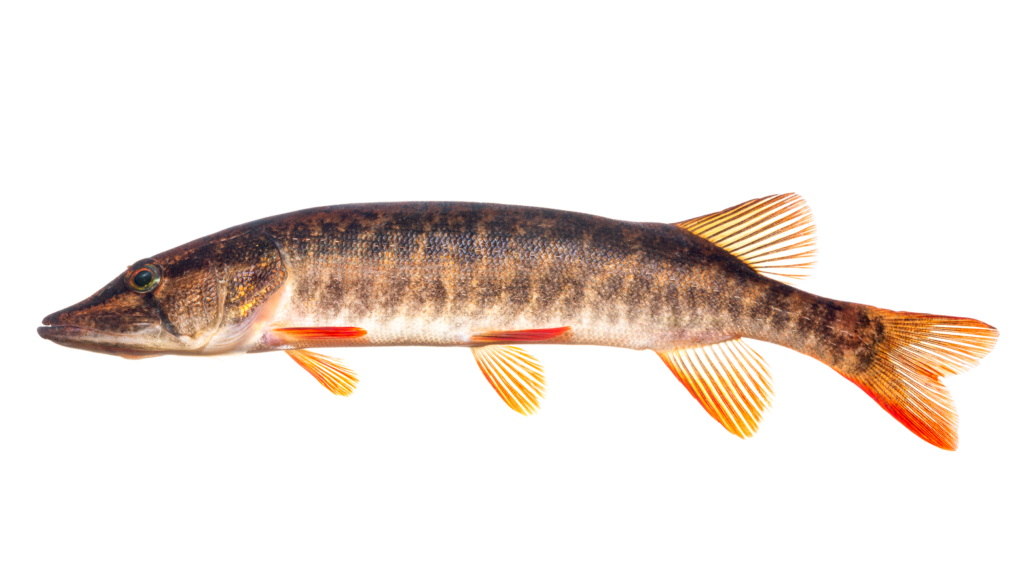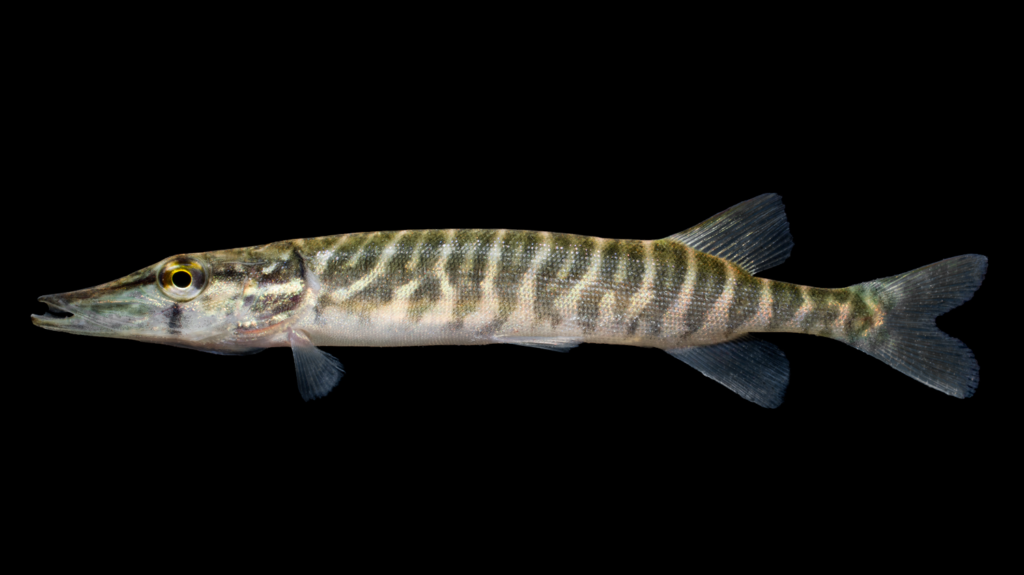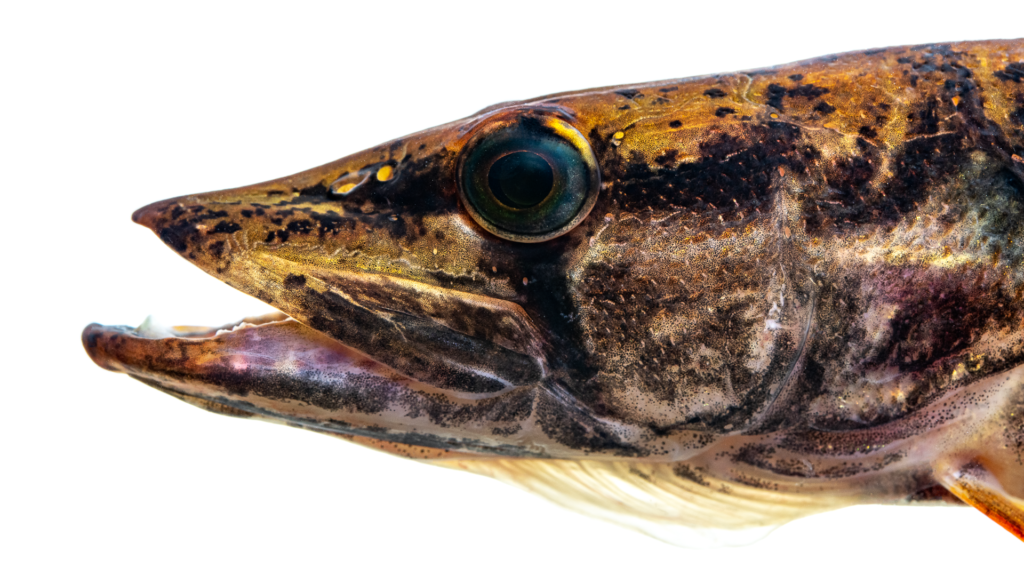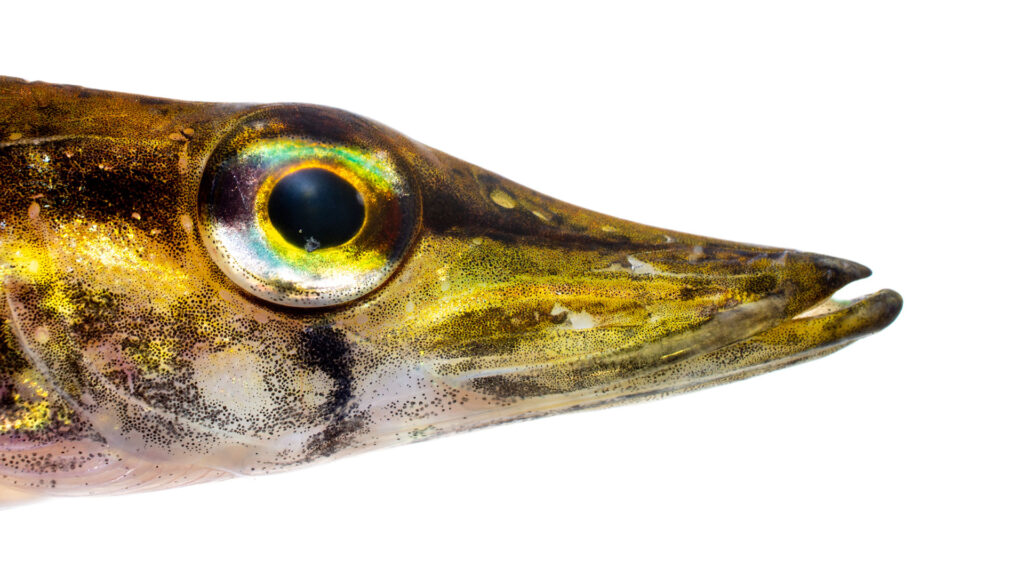By the NCFishes.com Team
North Carolina is home to 3 of the 4 species of Esox known to occur in North America: Redfin Pickerel, Esox americanus, Chain Pickerel, E. niger, and Muskellunge, E. masquinongy (Tracy et al. 2020). [Please note: Tracy et al. (2020) may be downloaded for free at: https://trace.tennessee.edu/sfcproceedings/vol1/iss60/1.] There are two subspecies of E. americanus recognized: E. americanus americanus, Redfin Pickerel, and E. americanus vermiculatus, Grass Pickerel. Grass Pickerel do not occur in North Carolina. Decades ago, Northern Pike, E. lucius, was introduced into several river basins (Yadkin and Roanoke) (https://nas.er.usgs.gov/queries/FactSheet.aspx?SpeciesID=676), but thankfully, the introductions were unsuccessful.

The Family Esocidae is colloquially known as pikes and often you will hear our species referred to as Little Pickerel, Pickerel, Pike, Jack, Jackfish, and Musky. Their American Fisheries Society-accepted common names are Redfin Pickerel, Chain Pickerel, and Muskellunge (Page et al. 2013) and each of their scientific (Latin) name actually means something (please refer to The Meanings of the Scientific Names of Pikes, page 6).
Both Redfin Pickerel and Chain Pickerel are native (indigenous) east of the Mountains (Map Nos. 1 and 2). [Please note: see Supplemental Maps 1-3 , page 7, showing North Carolina’s 100 counties, 21 river basins, and 4 physiographic regions.] Redfin Pickerel is primarily a Coastal Plain species but there are records from the western Piedmont in the Catawba basin and from the upper Roanoke basin (Map No. 1). Chain Pickerel, whose distribution overlaps that of the Redfin Pickerel, is introduced (nonindigenous) in the French Broad basin (Buncombe, Henderson, and Transylvania counties) where they are likely to be confused with the indigenous Muskellunge (Map No. 2). By comparison, Muskellunge is indigenous to the Tennessee drainage (Nolichucky, French Broad, Little Tennessee, Hiwassee basins), but it has been stocked as a sport fish in the New River and in the Broad River and Lake Adger (Broad basin) (Map No. 3). All three species are considered an inland game fish (NCWRC 2020).

North Carolina’s pickerels are common inhabitants of the Coastal Plain’s swamps, sloughs, creeks, mill ponds, and our natural lakes. Redfin and Chain pickerels are frequently found in tannin-stained blackwater and acidic Coastal Plain and Sand Hills streams wherever there is cover such as vegetation, brush piles and logs (Rohde et al. 2009). In the Piedmont, pickerels are also found, though less common, in creeks, rivers, and reservoirs. Muskellunge tend to inhabit our bigger, deeper, and slower moving rivers in the Mountains such as the French Broad and New, along with reservoir populations in Lake Adger and Fontana Reservoir.
Their identification is relatively straight-forward. Key characteristics for their proper identification include the presence/absence of a subocular bar, color and spotting of the fins, scalation of the opercle, and the relative length of the snout (please refer to the Identification Key to the Species of Pikes (Family Esocidae) in North Carolina. Additionally, size can also aid in their identification: the maximum size of Redfin Pickerel is about 15 inches, about 40 inches for the Chain Pickerel, and up to 72 inches for the Muskellunge (Rohde et al. 2009).
Hybridization is known to occur between Redfin Pickerel and Chain Pickerel which can make those specimen’s identification problematic. If you have troubles with your identifications, just send us (https://ncfishes.com/contact/) an e-mail and include as many quality digital photographs as you can along with all the pertinent locality descriptors so that we will know from where the fish came.

